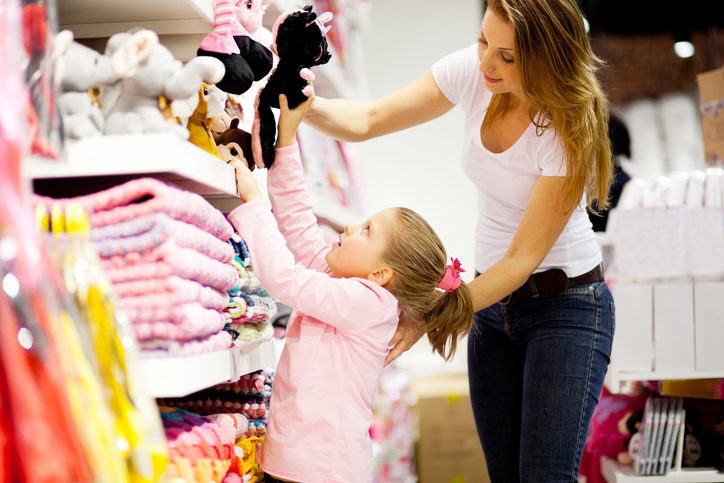An unwelcome guest often accompanies the gift-giving season: holiday greed. How do you prevent sweet little Sam or Sally from morphing into a green-eyed monster? For a lot of parents (and grandparents) the task starts with self-understanding.
“How do we teach our children that spirit of giving amidst all the commercials for toys and other things that every child would like to have?” asks Gail Rizzo, a child and family counselor with St. Elizabeth Healthcare. “First and foremost it comes from role-modeling by the significant adults in the child’s life.”
Here are some ideas to help curb holiday greed in your household:
- Model behavior. Do your children see you dog-earing catalogs and dropping hints, or do they see you taking joy in giving gifts and demonstrating gratitude when you receive them? Project the behavior you want to see.
- Don’t binge. Don’t make Christmas or Hanukah a year-end bonanza. (You wouldn’t let your child eat an entire cake at one sitting, would you?) It’s OK to give gifts at other times of the year and for other occasions.
- Lose the list. Santa isn’t running a fulfillment warehouse. List making encourages kids to think in terms of “I want.”
- Explain commercials. Helping children understand that commercials are designed to make them want something will not only help them curb their greed, it will help them develop into savvy consumers.
- Open with care. Great chefs know that presentation is important and that food is meant to be savored and enjoyed slowly. The same is true with gifts. Take time to both wrap and open the gifts. Not only does it extend the fun, it enables the giver to relish the experience of watching his or her gift be unwrapped and appreciated. If everyone dives in at once, the moment — and the joy of giving ““ ends up buried under a sea of wrapping paper.
- Foster empathy. Do you want your child to be grateful and appreciate what they have? Help them understand what the holidays may be like for a less-fortunate family. Have your child decorate and fill a holiday food basket for a local shelter or purchase a gift for a school or church “giving tree.”
- Practice giving. Help your child think about the people to whom she wants to give gifts and involve her in every step of the process from making or purchasing the gift to wrapping and delivering it.
“One of the most meaningful ways an adult can teach children about the benevolent meaning of the holidays is to role-model giving and let their children be a part of that experience,” Rizzo says.
Before you give up on buying all together, check out this list of ideas that are not toys.

